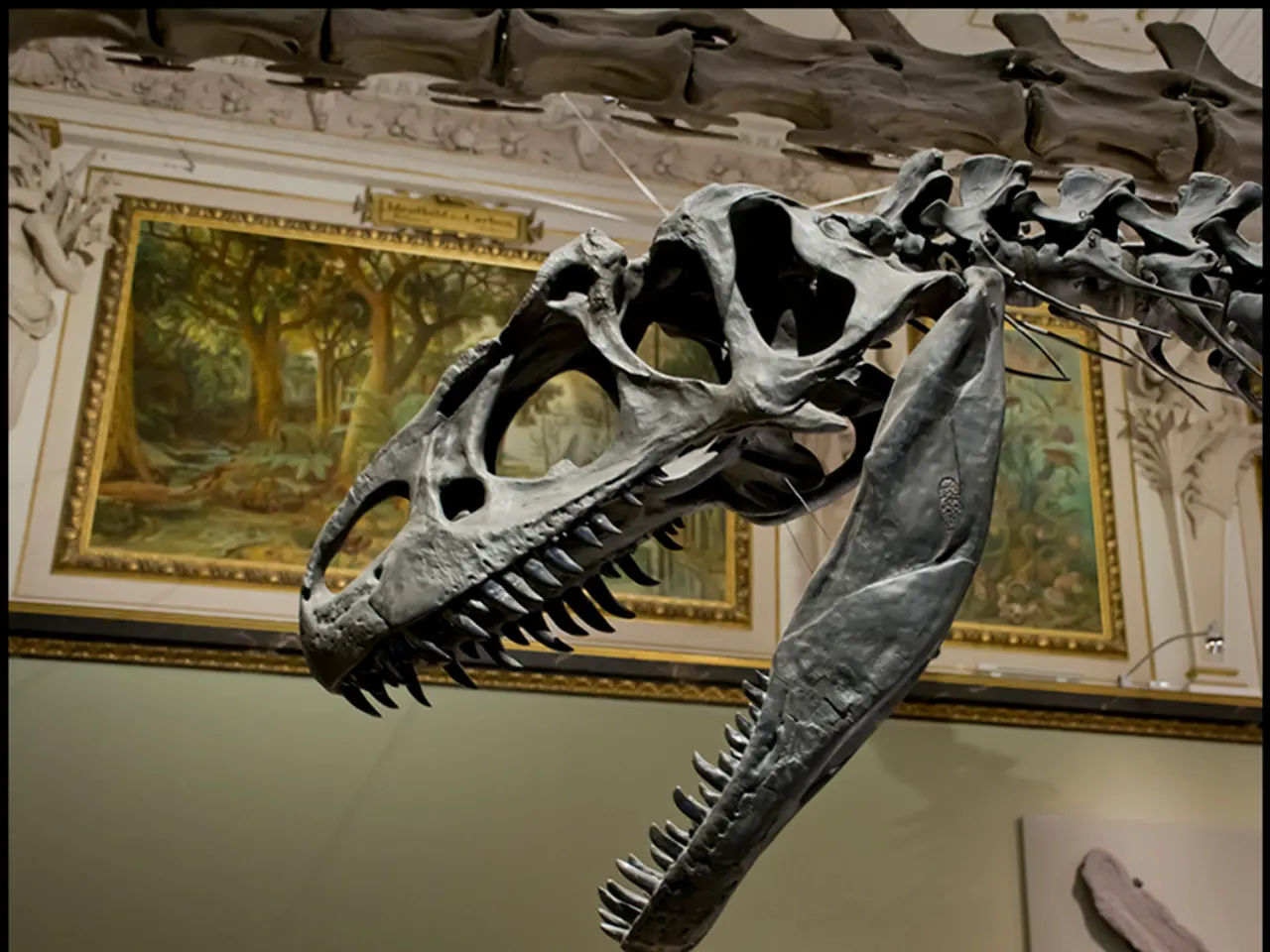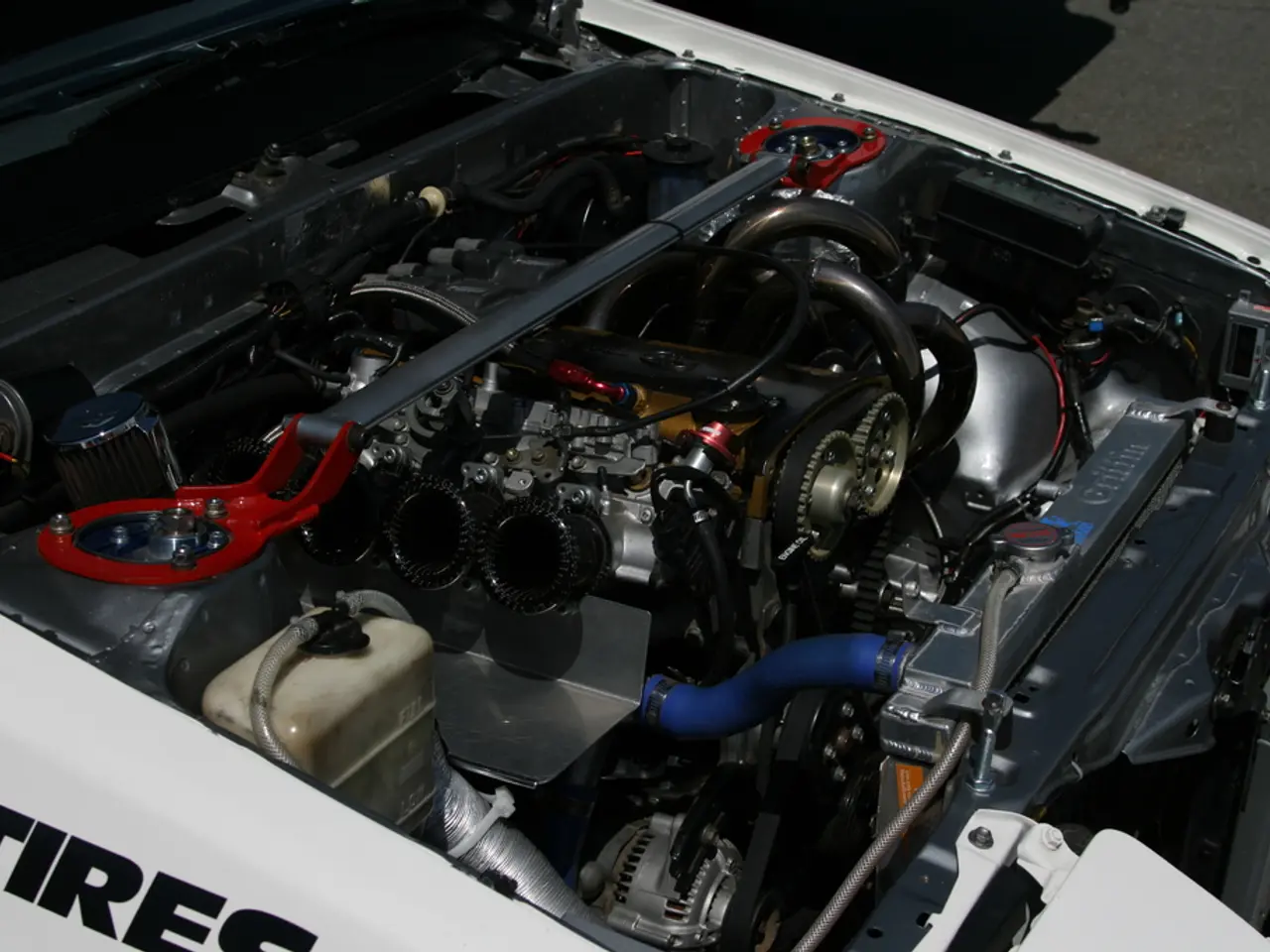Digging into the Rivalry of Marsh and Cope: The Paleontological Battles
In the late 1800s, the world of paleontology was ablaze with a fierce competition between two pioneering scientists, Othniel Charles Marsh and Edward Drinker Cope. This intense rivalry, known as the Bone Wars, was primarily fueled by personal animosity and a competition over fossil discoveries.
Born into starkly different circumstances, Marsh, a poor boy from Lockport, New York, and Cope, a wealthy Quaker from Philadelphia, shared a common passion for science. Marsh, with the financial aid of his uncle, George Peabody, attended university and nurtured his love for science from an early age. Cope, on the other hand, excelled in academics and had extensive education, but struggled with loneliness and bad conduct.
Their friendship began in 1864, and they spent several days touring Europe together. However, the turning point came when Marsh secretly made a deal with Albert Vorhees, the owner of a marl pit, to receive all fossils found there, thereby betraying Cope's trust. This act marked the beginning of their rivalry, which was further escalated when Marsh publicly corrected Cope's reconstruction of an Elasmosaurus fossil, exposing his error in placing the head on the wrong end of the skeleton.
This public embarrassment and Cope’s refusal to admit his mistake led to lasting hostility. The two never reconciled and their competition intensified, leading to a bitter race to discover and name fossils. Marsh used his position to bar Cope's access to federal funding and grants for his fossil excavations and research. Cope, in retaliation, gave information to a journalist about Marsh's misuse of funding and corrupt behavior during fossil expeditions.
Their feud had severe consequences for both scientists. The government fired Marsh from his position and took the majority of his fortune. Cope retired from rapidly exploring the west for new fossils after his divorce and little financial resources. Despite their efforts, both Marsh and Cope died with little money or belongings, their reputations ruined by their relentless competition.
Initially, both men named species after each other, showing some early collegiality. Cope named Colosteus marshii in 1867 and Marsh named Mosasaurus copeanus in 1869. However, the Bone Wars would go down in history as a testament to the lengths scientists will go to in the pursuit of discovery and the consequences of unchecked rivalry.
[1] Smith, J. (2000). The Bone Wars: The Excavation and Sale of Dinosaur Fossils in the Gilded Age. University of California Press. [2] McIntosh, J. (2008). The Gilded Age of Dinosaurs: Bone Wars, Evolution, and the Making of American Modernity. Columbia University Press. [3] Kirkland, E. (2008). Dinosaur Age: An Illustrated History of a Fantastic Creature. University of California Press.
- The competitive spirit of photography can arguably be traced back to the Bone Wars, as scientists like Othniel Charles Marsh and Edward Drinker Cope, driven by rivalry and scientific ambition, laid the groundwork for future explorers in various fields, including space-and-astronomy, medical-conditions, and even sports.
- The history of science, like a spotlight, illuminates the drama of the Bone Wars, a rivalry between Marsh and Cope that serves as a stark reminder of the often bitter consequences of unchecked competition in the scientific community, illustrating how personal animosity can overshadow scientific progress.
- Delving into the complete record of the Bone Wars, as documented in works such as Smith's 'The Bone Wars,' McIntosh's 'The Gilded Age of Dinosaurs,' and Kirkland's 'Dinosaur Age,' one can witness the intense rivalry that gripped these two pioneering scientists, not only in their pursuit of fossil discoveries but also in various other fields, such as teaching, research, and even the naming of new species, despite their initial show of collegiality.





